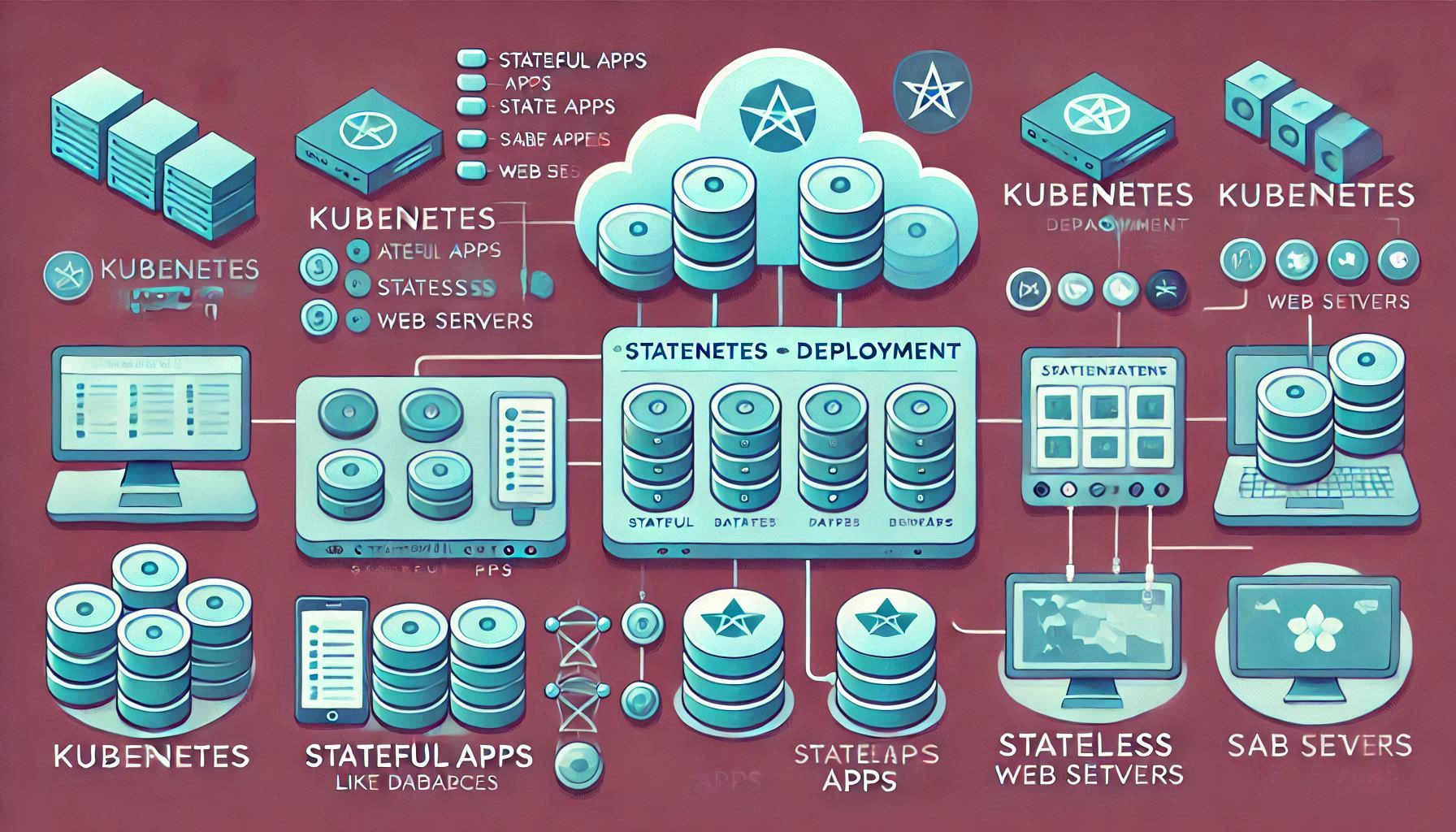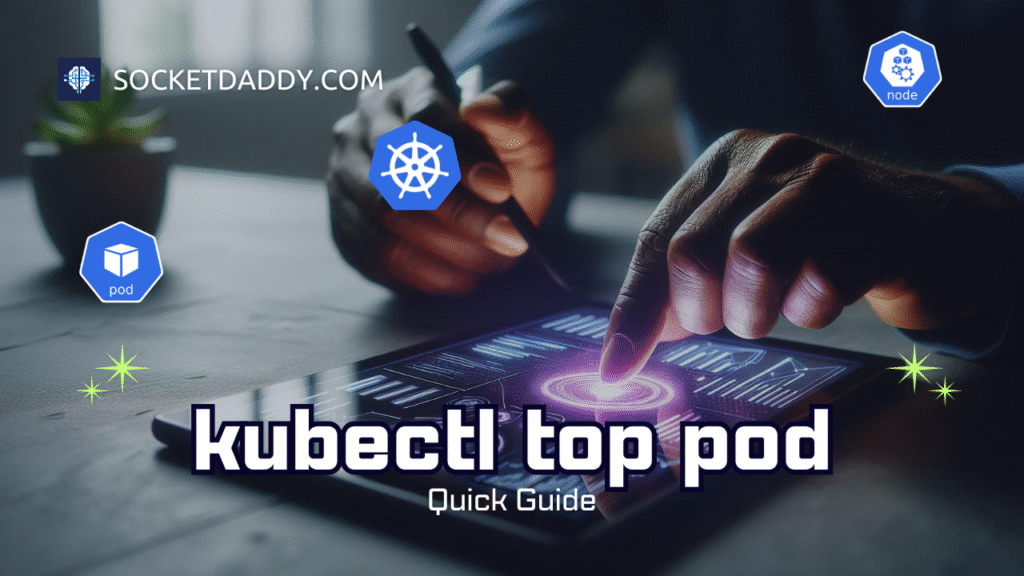Containers excel at stateless workloads. Databases, message brokers and other stateful services demand stable storage and network identity. Kubernetes StatefulSet delivers predictable pods and persistent volumes to meet those needs. This guide unpacks StatefulSet architecture, volume management, access controls and event-driven patterns in production-grade clusters.
TL;DR
StatefulSetassigns stable network IDs and ordered pod lifecycle.PersistentVolumeClaimsandStorageClasses automate dynamic provisioning.- CSI drivers enable snapshots, resizing and cross-zone replication.
AccessModesand security contexts enforce per-pod isolation.- Quotas and resource policies govern capacity and multi-tenancy.
- Event-driven patterns integrate StatefulSets with Kafka, Argo and Knative.
Kubernetes StatefulSet Overview
StatefulSet manages pods with stable identities. It ensures ordered creation, scaling and deletion. Each pod gets a unique ordinal index. The controller maintains pod-to-PVC mapping across restarts and reschedules.
Key Features of Kubernetes StatefulSet
Kubernetes StatefulSet differs from Deployments in several ways:
- Stable network identity via headless Service: pods addressable as
$(statefulset-name)-0.$(service-name). - Ordered pod operations: creation scales from index 0 up; termination scales down in reverse order.
- Persistent storage: each pod links to its own PersistentVolumeClaim.
Kubernetes StatefulSet Lifecycle and Volume Management
StatefulSet enforces a strict lifecycle. The controller creates Pod 0 before Pod 1. When you scale down, it deletes Pod N before Pod N−1. This order preserves data consistency in leader-election or quorum systems.
Volume types include:
emptyDir: ephemeral scratch space bound to pod lifetime.hostPath: binds host node directory; use with caution for multi-node clusters.- Network filesystems (NFS, GlusterFS): share data across pods.
- CSI volumes: block or file storage drivers, vendor-specific.
Dynamic provisioning uses StorageClasses. Configure parameters like volume type, IOPS, zones. When you declare a PVC, the provisioner fulfills it automatically:
apiVersion: v1
kind: PersistentVolumeClaim
metadata:
name: data-claim-{{ .StatefulSetOrdinal }}
spec:
accessModes:
- ReadWriteOnce
resources:
requests:
storage: 10Gi
storageClassName: fast-ssd
Persistent Volume Claims and StorageClasses
PVCs represent storage requests. The cluster matches them to available PVs. If none exist, it uses StorageClasses to dynamically create one.
StorageClass parameters vary by provisioner. Example for AWS EBS:
apiVersion: storage.k8s.io/v1
kind: StorageClass
metadata:
name: fast-ssd
provisioner: kubernetes.io/aws-ebs
parameters:
type: gp3
zones: us-east-1a,us-east-1b
one-of-multiple-topologies: >-
kubernetes.io/zone
Resizing volumes requires CSI drivers and PVC edit. After you increase spec.resources.requests.storage, CSI resizer adjusts volume size. Ensure your cloud provider supports online resizing.
Volume Snapshots and CSI Integration
CSI snapshot capability lets you capture PV state. You create VolumeSnapshotClass and VolumeSnapshot resources:
apiVersion: snapshot.storage.k8s.io/v1
kind: VolumeSnapshotClass
metadata:
name: ebs-snapclass
driver: ebs.csi.aws.com
deletionPolicy: Delete
---
apiVersion: snapshot.storage.k8s.io/v1
kind: VolumeSnapshot
metadata:
name: data-claim-snap
spec:
volumeSnapshotClassName: ebs-snapclass
source:
persistentVolumeClaimName: data-claim-0
You restore a PVC from a snapshot by specifying dataSource in the new PVC spec.
Access Modes and Security Contexts
Pods mount volumes using AccessModes:
- ReadWriteOnce (RWO): mountable by a single node.
- ReadOnlyMany (ROX): multiple nodes read-only.
- ReadWriteMany (RWX): multiple nodes read-write (supported by NFS, CSI).
Use SecurityContext to drop privileges and restrict capabilities:
spec:
securityContext:
runAsUser: 1000
fsGroup: 2000
allowPrivilegeEscalation: false
PodSecurityPolicies or Pod Security Admission enforce stricter controls. Define SELinux labels, AppArmor profiles or seccomp policies per namespace.
Resource Quotas and Capacity Planning
Namespaces enforce quotas on CPU, memory and storage. Example quota for storage:
apiVersion: v1
kind: ResourceQuota
metadata:
name: storage-quota
spec:
hard:
requests.storage: 100Gi
persistentvolumeclaims: "10"
Use VerticalPodAutoscaler for pod resources. The cluster autoscaler can adjust worker nodes to accommodate Kubernetes StatefulSet replicas.
Kubernetes StatefulSet Use-Cases and Event-Driven Workflows
Event-driven architectures often combine StatefulSets with messaging systems.
For example, deploy Apache Kafka using a StatefulSet. Each broker gets stable ID and storage. Use Kubernetes Event-driven Autoscaling (KEDA) to scale consumers.
This pattern ensures ordered broker startup and consistent topic assignments. Consumers scale on queue depth. Databases handle writes with leader election.
Best Practices for Production Deployments
- Use headless Service for stable DNS.
- Enable
PodDisruptionBudget to protect availability. - Set tolerations and node affinities for zone-aware scheduling.
- Automate backups via snapshots and Velero.
- Monitor metrics with Prometheus and Grafana.
References
- Official Kubernetes Stateful Applications tutorial.
- Kubernetes Volume Snapshot and StorageClass docs.
- Kubernetes Storage Classes.
Suggested Reading
PostHashID: f2b1f68c4e35bf8c40855a1419fa67688a22bf67868faedcc85e97fab065a24d




